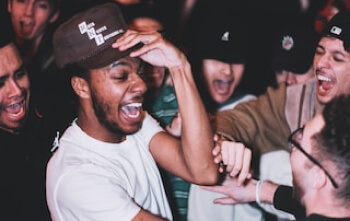You’ve got a solid idea. It’s bold, fresh, and instinctively feels like the right move. But now, you’re in the pitch room—and the vibe shifts.
The questions start rolling in:
“What’s the data saying?”
“Has this worked before?”
“Can we quantify the impact?”
This is where most creatives freeze—not because the idea isn’t good, but because they weren’t ready to defend it beyond the feeling.
More often than not, the real challenge isn’t ideation—it’s justification.
Before you pitch, there are five things you need to ask yourself:
-
- Am I leaning too much into instinct or logic?
- Is this idea driven by gut or backed by insight?
- Can I draw a clear line from vision to validation?
- Is the emotional angle strong enough to connect?
- Is the strategic angle strong enough to convince?
Let’s break this down.
Creative vs. Rational: Heartfelt Ideas vs. Data-Driven Decisions
The Emotional Creative These are the storytellers, the vibe curators, the ones who feel their way through an idea before they explain it.
They’re driven by purpose and human connection. They speak in tone, mood, culture, and concept.
For them, if it moves people, it matters.
But when it’s time to talk budget, business goals, or past performance, emotional conviction can come off as vague—even risky. In rooms that run on logic, instinct alone often gets questioned.
The Rational Strategist They want the why, the how, the numbers. Their confidence comes from evidence.
They value structure, consistency, and trackable outcomes. They don’t mind killing a good idea if it doesn’t check all the right boxes.
This approach builds trust with stakeholders—but it can also water down bold, culture-shifting ideas. Because sometimes, the most impactful creative work doesn’t come with a neat data trail… yet.
Creative Logic: Finding the Balance The smartest ideas don’t live on either extreme.
-
- Let emotion lead the concept.
- Let logic shape the execution.
- Feel it first. Prove it next.
When you strike that balance, your work doesn’t just make sense—it makes people feel, act, and remember.
Real Impact Lives in the Middle The work that connects and converts? It’s not one-sided.
It starts with instinct.
It gets refined by data.
It centers on people.
And it earns its place in the strategy deck.
So before you bring that next idea to the table, make sure you’ve tested it—both emotionally and rationally.
That’s how you win the room.









